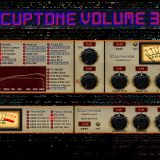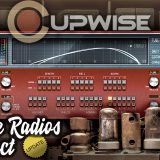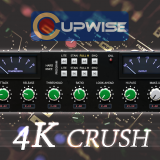Bawling Brat Filter FX
Nice filter effects which can be used for sound design or mixing. For Nebula.
Product Description
A fair amount of possibility in the set means that if you are into filters, you should be able to get plenty of use with it. Based on 4 ‘specimens’.
Here’s what’s in this set:
- 3 different sample sets (vectors) taken from 4 units. One set used two standard models to get a stereo configuration. One used a ‘classic’ model and another used a ‘Q’ model, which allows for an adjustable filter width, and both of those are ‘mono’ but that just means that the same samples process each channel separately. They don’t collapse your audio to a mono output.
- Each of those 3 root effects are different (and sound different) in a few key ways. These include the ranges that the peak filter sweeps around in, which are different for all 3 (yet share some overlap). The sharpness of the filters are a bit different, and as stated, the 3rd filter effect allows you to actually adjust the filter width, which makes it more versatile.
- Each of the 3 has a set of 3 types of programs, which use the samples in the vector in different ways, to produce very different results/sounds. The first type is the LFO programs, which use a control system I’ve designed and refined over time. It allows you to place the LFO’s sweepable range anywhere in the full range of the filter that you want it to go, for maximum control. There are programs for different LFO shapes, which can give very different results (my favorite are the ramps).
- The next type is the envelope follower programs. They have a control scheme very similar to the one I designed for the LFO programs, but with the addition of ‘attack’ and ‘release’ controls. There are 3 ‘flavors’, going forward, and backwards. The forward ones move the filter up in frequency as input level gets louder, and the backwards ones move the filter down. The 3 ‘flavors’ were made by using some different methods and combinations of envelope followers of various types.
- The last type is the manual programs, which give you a single control labeled ‘wah’ that you can either leave in a fixed position, or modulate via your DAW’s modulation options (whatever they may be, if any), or automate and adjust directly. These would be the closest to giving you the same type of expressive ability as an actual pedal, minus the synergy of being able to hear the results while actually playing, and playing for the effect.
- Every program has an SHQ version for rendering. There is a bigger difference than usual with my SHQ programs this time. Here, the SHQ programs not only use timed mode (among other changes), but also add sampled dynamics to the filter models, which by itself increases the required CPU. In my opinion they give more fluidity to the sound. As always, they are for rendering only.
- Plenty of additional controls in each program, to give you further sound shaping ability, such as- dry, feedback, and smooth.
Comments
Would you like to submit yours?
Add a comment
Demo programs: be sure to read the .txt included with these demo programs! there are 2 44.1khz and 2 96khz programs, and the 44.1khz ones will work with a free nebula, while the 96khz ones only work with a full version of Nebula. DOWNLOAD HERE.
Manual: You can take a look at the manual here! You probably should take a look at it to get an idea of the effort that went into this set, and the scope of it!
This first one shows you the LFOs on a synth. First you hear it dry, then it goes through 5 different LFO shapes out of the 7 available, all using the first root filter effect (the standard models that were sampled in stereo). Some parameters were automated, like the base/width of the LFO, feedback amount, LFO rate, and different amounts of dry signal are mixed in for each clip.
More LFOs. Another 5 shapes, this time using the 'classic' filter set.
5 more LFO shape demos, this time using the Q model, with its adjustable filter width.
This one is a guitar, first dry, then using an LFO program with some automation of some key parameters. In both cases, an amp sim comes after the filter fx, but all parameters were kept the same (thanks rich!).
This last one shows a handful of results obtained by running some programmed drums through a few of the envelope follower programs, at different settings. First you hear dry, then the processed clips.
















Formbank (Pete Kelly) –
A fantastic release, surprised there hasn’t been more positive feedback about this one.
Formbank (Pete Kelly) –
Just uploaded a video showing one of the patches from the library:
http://youtu.be/Ok2WytmrTJA